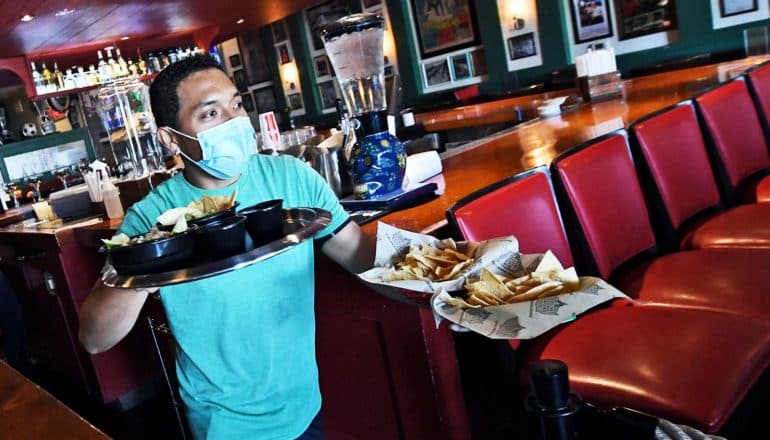
There’s good news and bad news about the impact social distancing is having on the spread of COVID-19 in the United States, according to a new study.
The good news: In all but three states, social distancing reduced the rate at which confirmed cases were doubling. Across all states, the average doubling rate decreased sharply from 3.31 days to about 100 days.
The bad news: the measures have not been enough to significantly reduce the number of daily new cases. Though that number has plateaued, the disease is still spreading, albeit more slowly, but not actually contracting.
“The effect is not as large as one would have hoped for going in,” says lead author Aaron Wagner, professor of electrical and computer engineering at Cornell University. As a result, he says, the states now reopening businesses and relaxing restrictions “do not have much headroom” for error. “You’re right on the edge of it starting to blow up again.”
“Policymakers need to be aware of this,” says coauthor Elaine Hill, assistant professor of public health sciences at the University of Rochester. “We need more studies to identify the practices that can move us to a place where COVID-19 is actually contracting.”
For the study, researchers used the New York Times Github repository of COVID-19 data to gather, state by state, numbers of confirmed cases between March 15 and April 25. Restaurant and K-12 school closures marked the imposition of social distancing measures, and the researchers used data from the Centers for Disease Control to establish 12 days as the average time from a person being infected to having a confirmed test.
The researchers applied interrupted time series analysis, compiling separate plots of case doubling rates before and after a specific “change point” in each state—the date states imposed social distancing. They then connected the pre- and post-change point plots of doubling rates on a graph. The graphs also show day-to-day numbers of confirmed cases.

The graphs show a dramatic reduction in doubling rates, but also show daily confirmed case numbers remaining fairly constant. Before the introduction of social distancing, for example, each infected person, on average, was infecting 2.3 other people; after social distancing, each infected person, on average, was still infecting at least one other person. That means social distancing has merely stabilized the spread of the disease, rather than reversing it.
The study did not examine exactly why social distancing hasn’t been more effective in the US. However, other studies have shown, for example, that “even in the most responsive parts of the country, reduction in cell phone mobility is still only 50%; it’s not a 100%,” Hill says. “And the length of time that people are spending in close proximity to other cell phones is still remarkably high as well. So that’s probably a major factor.”
“I think what has been surprising, at least for our team and other teams that have been studying this, is just how stable the coronavirus has managed to be,” Hill says. “That was definitely not something that we expected.”
Part of the challenge in deciding how to move forward on the research is that various states, out of necessity, “imposed a whole basket of measures all at once,” Wagner says. So, it is hard to statistically “disentangle” which kinds of social distancing have been most effective–closing schools versus closing restaurants, for example—and which have been less so and should be the first to be relaxed, Hill adds.
They suggest that as policymakers try to restart the economy but also control COVID-19, they should:
- Consider a carefully phased relaxation of social distancing, such as first targeting a limited number of businesses and economic activities where duration of human contact is limited: restaurants offering take-out meals, for example, rather than in-restaurant dining; or construction activity where it might be easier to maintain social distancing between workers.
- Allow enough time for models like the one used in this study to assess the effect of the targeted relaxations before extending them to other areas.
- Consider augmenting social distancing with other practices, such as universal use of face masks, or contact tracing.
“Unfortunately, because we haven’t had a truly stringent lockdown across the United States, we need to come up with some out-of-the-box ideas so we can protect people,” Hill says. “This is going to be fascinating to follow. This is not the end of the story.”
The research appears as a preprint on medRxiv. Additional researchers from Cornell University and the University of Rochester contributed to the work.
Source: University of Rochester
The post Social distancing stabilized, but didn’t stop, COVID-19 appeared first on Futurity.
from Futurity https://ift.tt/2SW6Clu
No comments:
Post a Comment